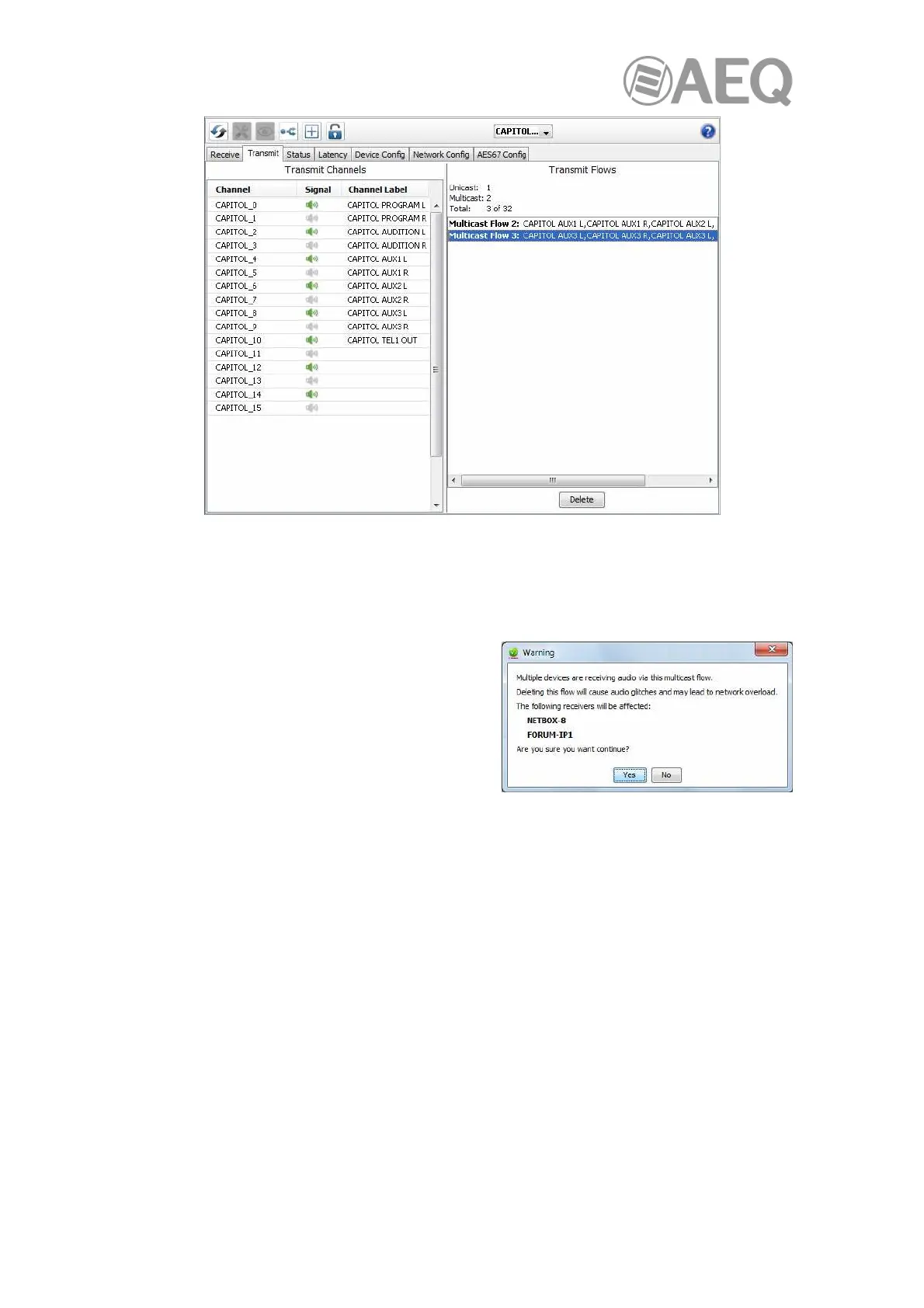AEQ Audio Over IP
Routing System
76
By default, Dante devices 'prefer' multicast over unicast. When you click a transmit channel to
make a subscription, the receiver will automatically connect to the channel via a multicast flow, if
one exists. Likewise, when a channel that did not form part of an existing multicast flow is added
to a new multicast flow, any existing unicast subscriptions to that channel will automatically
switch over to use the new multicast flow.
Care should be taken when deleting a multicast
flow, as the existing subscriptions will convert back
to unicast. This has the potential to result in
exceeding the link capacity or maximum number of
flows at the transmit device, as multiple unicast
flows will be established between the transmitter
and its receivers. It may be advisable to remove
some or all of the audio routes prior to deleting the
multicast flow.
A good rule of thumb is to use multicast when there are more than two receivers for a specific
audio channel. You should also assume that the flow will flood throughout the entire network,
and therefore consume bandwidth on all network links.
NOTE: Certain Ethernet switches support IGMP (Internet Group Management Protocol), a
protocol that provides the ability to 'prune' multicast traffic, so that it travels only to those end
destinations that require that traffic. If this is the case, and IGMP is correctly configured on all
the Ethernet switches, then multicast audio will not flood throughout the network, but will instead
be sent only over the links required to deliver it to subscribed devices. Appendix 1 provides
information about requirements and offers recommendations in this respect, and also regarding
the use of properly configured bridges or routers that can avoid overflow produced by multicast
audio streams in network areas not related to audio.
